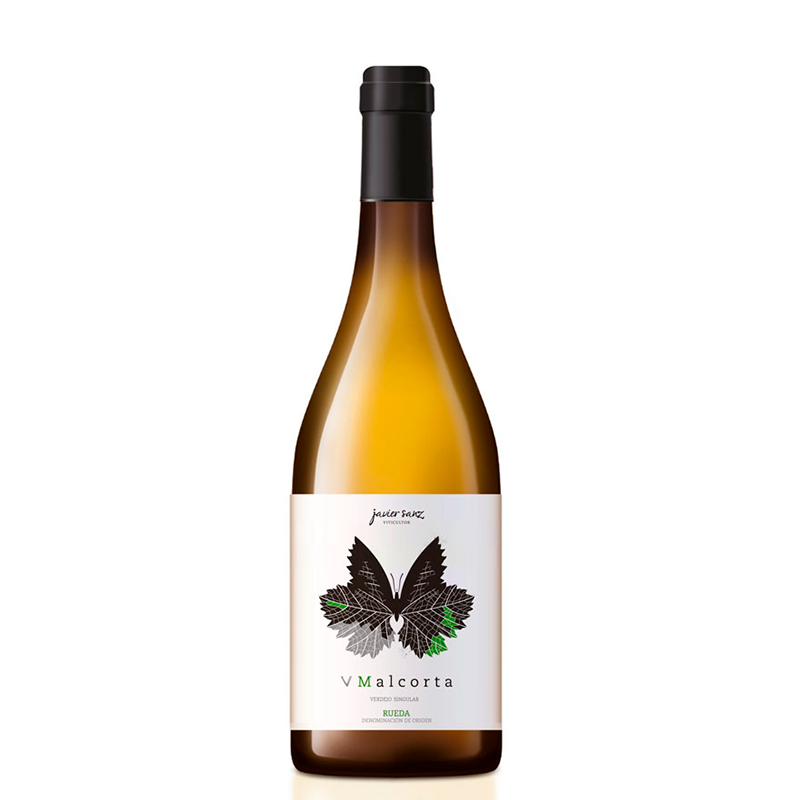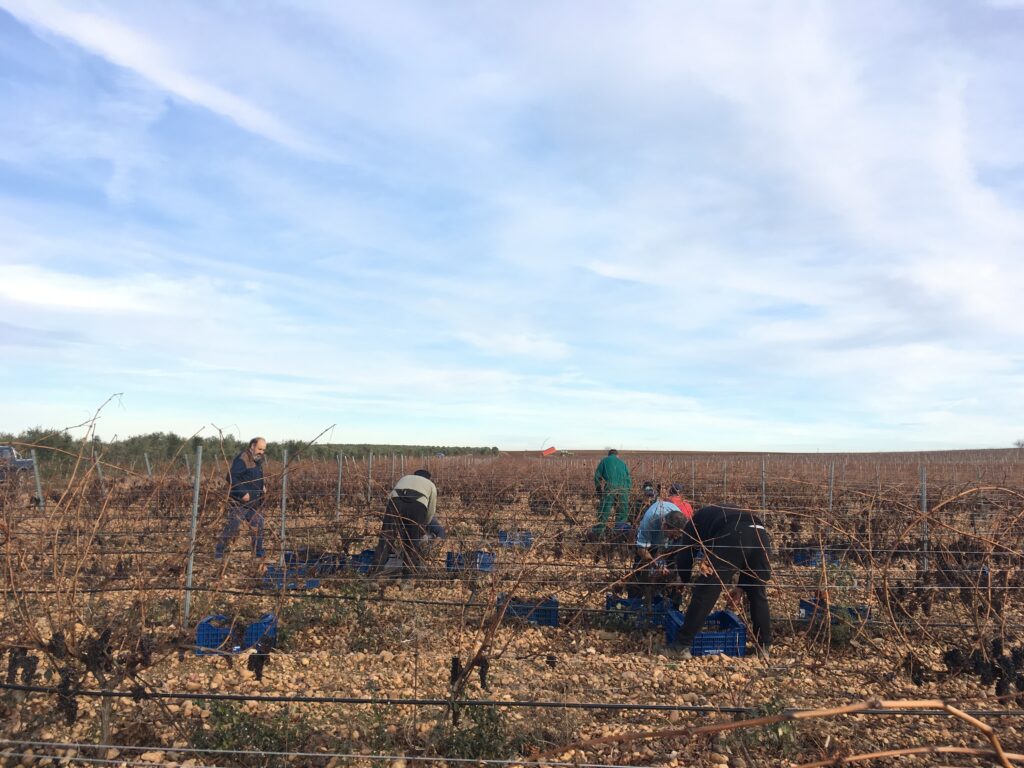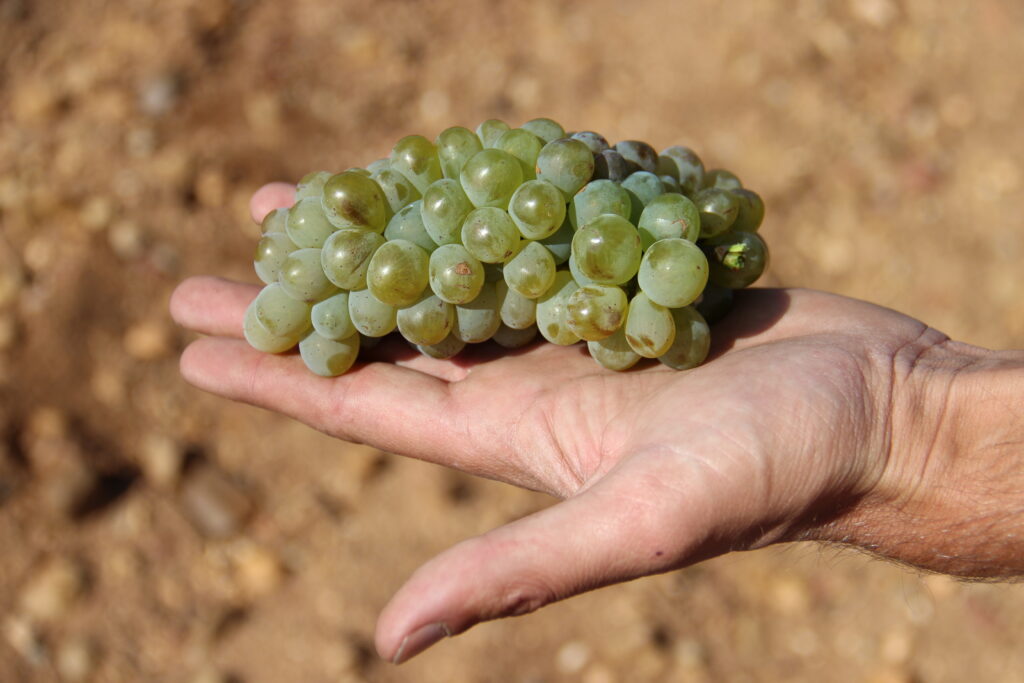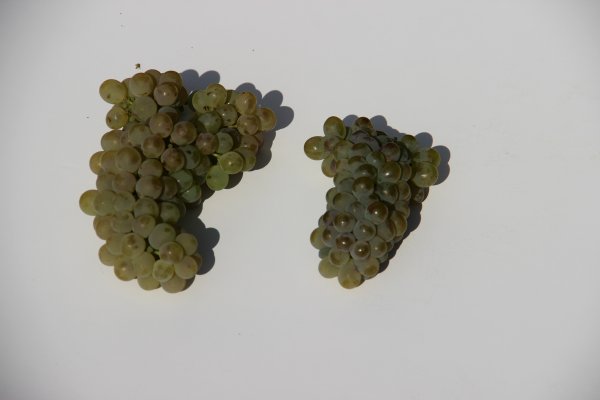Javier Sanz 2020 V Malcorta Verdejo Singular Rueda 93

My love for native grapes and their wines runs deep and in fact, does not stop at Italy’s. Over the last twenty years I have been painstakingly cataloguing rare forgotten native grapes from every corner of the wine world, a body of work that is becoming so large I am not sure I will ever finish it before my Earthly time will have run its course. No matter, I enjoy the research and the learning, and meeting the passionate quixotic individuals who devote their life to saving the planet’s biodiversity. And though at times I wonder if it doesn’t all amount to a Sisyphean task of sorts, it is a quest that I have always found carries infinite rewards, even if at times it means having to reach places where even mountain goats refuse to tread. At other times, it is all much easier: for example, given the lay of its land and how pretty it is, visiting Spain’s Rueda is no hardship at all. Rueda is a Spanish wine region, or more precisely when it comes to wines, a Spanish Denominación de Origen Protegida (DOP) located in the Community of Castilla y León (Castile and León) located in the north-central part of Spain on the Duero river roughly 150 kilometers northwest of Madrid (in fact, Rueda proper is a village and municipality in the province of Valladolid, part of the autonomous community of Castilla y León. It is best known for its lovely white wines made with the locally dominant Verdejo grape, but wouldn’t you know it, there just happens to be one very interesting and super-rare grape variety hiding amongst the vines there (and in fact, not the only one at that).

One such rare native wine grape is Rueda’s own Verdejo Malcorta (or Malcorta, for short), a grape variety that despite the name it carries, doesn’t really look much like Verdejo at all (see the photo) while the aroma and flavour profile of the wines made from each of the two varieties is slightly more similar. Whether Verdejo Malcorta is actually a biotype of Verdejo or an altogether different variety distinct from Verdejo in spite of the similar-sounding name is still not clear to me (and neither it is to the lone producer making wine from it). Of course, you’ll read in websites everywhere that Verdejo Malcorta is a “clone” of Verdejo, and that’s just plain hilarious, besides patently wrong, because there are no such things as “clones” in old vineyards (in nurseries, OK: in old vineyards, unless they planted grapevines there just the day before, nyet). Whatever the reality of Malcorta may be (strain of Verdejo or distinct cultivar altogether) there can be no doubt that it had fallen on hard times, teetering on the verge of extinction, having been supplanted by modern Verdejo grapevines that are far easier to grow and harvest. This sorry state of affairs was brought about by the fact that the trunks, branches and stems of Verdejo Malcorta vines are extremely hard to cut, making the variety a very difficult one to prune. Hence the grape’s name (malcorta translates from Spanish into English as “hard to cut”: so hard to cut that most farmers gave up on the variety altogether, preferring to grow in its stead varieties that were easier to work with). As I will address shortly, there were probably other reasons that also contributed to the variety’s near-demise.

If we have Verdejo Malcorta today to talk about, and drink the wines made with it, it is thanks to the Javier Sanz winery, located in the center of the Rueda region in a Spanish town called La Seca. Javier Sanz Cantalapiedra is a fourth-generation member of his winemaking family, an individual devoted to preserving his family’s winemaking history and using local, forgotten, rare, often pre-phylloxera grapes. Among the various wines made by the estate, there are those that make up the “V Collection”, limited edition wines with unique defining characteristics and origins. Included in this range are the V Malcorta, the V1863, the V Dulce de Invierno and the V Colorado (the last one being the only red wine in the collection, made with the variety Cenicienta, a grape of unclear genetic origin).
Like many winery people, Sanz spent his childhood days running around and growing up in the family vineyards, and he remembers well those strange-looking Verdejo vines that all the workers complained about being so hard to cut. Over the years, he never forgot about that funny-looking grapevine, rightly intrigued by their novel look. And so, after many years of field research and working with the Rueda council and the Instituto Enológico, Sanz decided to go ahead and plant a vineyard solely of Verdejo Malcorta (this roughly twenty years ago) with the cuttings he selected from old vineyards where he had identified plants of Verdejo Malcorta still surviving amongst the multitude of “normal” Verdejo vines. He did so because it was clear to him this particular Verdejo grapevine didn’t look anything like the other Verdejo grapevines: he believed, not at all unreasonably, that the wine would show differently too. He wasn’t wrong.

Today, the Javier Sanz winery owns 5.5 hectares of Verdejo Malcorta (for perspective’s sake, keep in mind that the winery owns 104 hectares of vines overall, of which seventy are planted to “normal” Verdejo: half of this vineyard land is in the process of getting ecological agriculture certification). The Verdejo Malcorta is planted on soils characterized by a surface layer of up to eighty centimeters of gravel soil (pebbles of fluvial origin which allow the water to circulate to the layers beneath) over a clayey layer that allows for good water retention. Verdejo Malcorta has a much smaller and more compact bunch than does Verdejo, and the grapes are smaller too, tightly packed together. It also has smaller and woody tendrils. Last but not least, it is also less productive than Verdejo (so besides the fact that it is hard to curt, this was no doubt another reason for farmers of yesteryear to do away with Malcorta). Characterized by a long vegetative cycle, it is a late-ripening variety: it is usually the last one to be harvested at the Javier Sanz winery and picked on average two weeks later than “normal” Verdejo (and that by the way, is yet another reason for farmers not to have been enamored of it). The grapes are characterized by higher acidity levels than Verdejo’s (a consequence of Malcorta’s long vegetative cycle), and known for producing piercingly lemony but balanced and concentrated wines featuring noteworthy minerality, not to mention refreshingly penetrating aromas and flavours of citrus fruit and white flowers. In general, Malcorta’s wines seem to express more florality compared to Verdejos’ fruitiness; but most of all, even though Malcorta wines undoubtedly express all the typical nuances you’d expect in wines made with “normal” Verdejo, with Malcorta everything gets kicked up a notch (or two, or three). The aromas and flavours of flowers (jasmine, lemon verbena) and of fruits (lime, lemon, orange, green fig, kumquat and tangerine) are reminiscent of both Verdejo and of Sauvignon Blanc wines, but in Malcorta’s wines the intensity is much stronger than that found in “normal” Verdejo wines. There is also quite a bit more texture, a great deal more acidity, and a more piercing, almost pungent quality to the aromas and flavours. In my experience, there is usually less obvious grapefruit presence than in Sauvignon Blanc wines (and in those Verdejo wines where too much Sauvignon Blanc has been added), but this may just be a result of when exactly the grapes were picked (and consequently the relative abundance, or not, of thiol molecules). Clearly, the Malcorta’s wine enamel-shattering but generally just-enough harmonious acidity makes wines made with Verdejo Malcorta particularly fresh and lively.
To the best of my knowledge, Javier Sanz is the only estate currently producing wine from the Verdejo Malcorta variety that is commercially available in any significant number. His first vintage was the 2014: it is a classically dry wine made by harvesting the grapes (when possible) at different times, putting them through cold maceration, settling the juice for roughly twenty-four hours, and following this up by gravity-led racking and a slow, cold stainless steel tank fermentation (usually below 15 degrees Celsius). The wine is aged in stainless steel tanks as well.

The Javier Sanz 2020 V Malcorta Verdejo Singular Rueda is bright pale yellow with golden tinges. Then downright explosively pungent on the nose, boasts penetrating aromas of lime, white peach, and white flowers plus undertones of green apple, green fig, anise, rosemary and cumin. In the mouth, it showcases a medium-bodied, gentle texture, and nicely fresh and fruity flavours of white peach, pear and green apple with a strong mineral overlay. Laser-like acidity nicely extends the flavours on the long, vibrant and tapered back end. This spent five months on the lees, and the hint of oily richness in the background helps offset the acid bite the wine is endowed with. Try this beauty as an aperitif in lieu of Champagne, or with seafood (such as grilled and smoked fish, or anything involving a citrus fruit and herb chutney). When all is said and done, the wine is not just very enjoyable and conversation starter given its curiosity factor, but also, and perhaps above all, a wonderful reminder of all the good, on so many different levels, that passionate human beings can do when they set their mind to it.

 中文
中文




What a remarkable story and note, Ian. Growers like Javier are a reason why indigenous wines are so full of mystery and ineffable surprise. We’re fortunate as well to have you to chronicle the rare and beautiful in them. Please stick around to finish your work 😀
Ciao Tom, yes isn’t it just a wonderful story? I mean, nobody wats to deny the greatness of Chardonnay oer Merlot, but fact is, those grapes give very average wines in most places they are planted in. Safe and good wines for sure, but ultimately beyond boring and nothing special, certainly nothing like they give in Burgundy or Pomerol. So stories like this about the Malcorta are fascinating, plus they help us discover new aromas and flavours in wine and to learn about wine producing areas we may not be as acquainted with or even producers we had ever heard of previously. But to ask about and to buy such wines is also a means by which to safeguard ie.do something concretely about preserving the world’s old vine patrimony but also the planet’s biodiversity. And that”s not bad at all! Cheers!